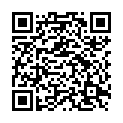|
|
|
| Module code: KI654 |
|
2V (2 hours per week) |
|
2 |
| Semester: 6 |
| Mandatory course: no |
Language of instruction:
German |
Assessment:
[updated 20.03.2007]
|
KI654 Computer Science and Communication Systems, Bachelor, ASPO 01.10.2014
, semester 6, optional course, technical
PIBWI88 Applied Informatics, Bachelor, ASPO 01.10.2011
, semester 6, optional course, informatics specific, course inactive since 19.07.2011
|
30 class hours (= 22.5 clock hours) over a 15-week period.
The total student study time is 60 hours (equivalent to 2 ECTS credits).
There are therefore 37.5 hours available for class preparation and follow-up work and exam preparation.
|
Recommended prerequisites (modules):
None.
|
Recommended as prerequisite for:
|
Module coordinator:
Prof. Dr.-Ing. Jürgen Schäfer |
Lecturer:
Prof. Dr.-Ing. Jürgen Schäfer
Dipl.-Ing. Hans-Joachim Bohr
[updated 01.10.2006]
|
Learning outcomes:
After completing this course, students will understand the different realizations of the physical layer and the data-link layer in the LIN and CAN field bus systems. They will also be acquainted with the basic functionality of the CANOpen protocol and with the fundamentals of the FlexRay system architecture. Students will be able to program a microcontroller in a CAN network so that data can be exchanged in accordance with a specified communications protocol. Students will have the opportunity to apply their knowledge in automation engineering projects.
[updated 13.03.2007]
|
Module content:
1. Fundamentals of data transmission
2. Data bus systems in automation and process control technology
3. CAN physical layer
4. CAN data link layer
5. CAN data transmission security
6. CAN bus – time response
7. Design of CAN systems
8. The 82C150 CAN chip
9. The CANOpen application layer
10. LIN physical layer
11.LIN data link layer
12. FlexRay – A data bus system for safety-critical applications
[updated 13.03.2007]
|
Recommended or required reading:
K. Etschberger: CAN – Grundlagen, Protokolle, Bausteine, Anwendungen, Carl Hanser Verlag, München 1994
W. Lawrenz: CAN Controller Area Network – Grundlagen und Praxis, Hüthig-Verlag, 1999
N.N: CAN Specification 2.0 Part B, CAN in Automation, Erlangen, 2002
N.N: CiA 102 DS V2.0 CAN physical layer for industrial applications, CAN in Automation, Erlangen, 2005
N.N: CiA 301 DS V4.1: CANopen application layer and communication profile, CAN in Automation, Erlangen, 2006
A. Grzemba, H.-C. von der Wense: LIN-Bus Systeme Protokolle, Franzis Verlag, 2005
N.N.: FlexRay Communications System Protocol Specification Version 2.1, FlexRay Konsortium, 2005
[updated 13.03.2007]
|
Module offered in:
WS 2006/07
|


